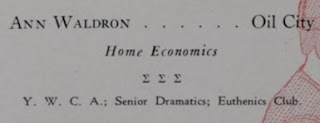Basil Fawlty: Is there something wrong?
German Guest: Will you stop talking about the war?
Fawlty: Me? You started it.
Guest: We did not!
Fawlty: Yes, you did. You invaded Poland.
During World War II, the Germans invaded Poland, France, Russia, and....Oil City. What, you say??? True, no Panzers ever rolled across the countryside, supported overhead by Luftwaffe air power. However in July 1945, over two months after VE Day and only weeks before the surrender of Japan, two German prisoners-of-war passed through town during a daring escape.
In May, 1945, the U.S. War Department announced German prisoners-of-war would be located to various work camps around Louisiana to mitigate the agricultural labor shortage caused by the war. One such site was at McCain's Gin, north of Shreveport and near Blanchard, where 150 prisoners were located. This was likely near McCain Road, located between Blanchard and Mooringsport.
Source:
Taylor (TX) Daily Press 31-May-1945, Page 5
While interned there, Rolf August Lendle (shown below on the right) and accomplice Willi Wurzbacher escaped from the compound on the evening of 23-Jul-1945 or in early morning of the 24th. Note Charlie King, shown on the left, escaped from another location in an unrelated incident. For those curious, his father was American, hence the non-foreign sounding name, but he grew up in Germany.
Following the Kansas City Southern railroad tracks north, their plan was to go to Texarkana and catch a train to Mexico, from which they would return to their homeland. The two split as they approached Oil City, with plans to reunite on the north side of town. After waiting a while for Lendle who did not show, Wurzbacher continued alone and was captured near Vivian on the 27th.
Monroe News Star 12-Mar-1946, Page 5
A description of Lendle, wearing his German uniform, but with American G.I. shoes.
In August 1945, the FBI notified Mississippi authorities of a possible Lendle sighting near Waveland, MS (close to Bay St. Louis). Perhaps he never intended to reconnect but instead wanted Wurzbacher to serve as a decoy continuing north, while he traveled in the opposite direction.
Regardless of the direction he took, a
s of 06-Jun-1946, he was still at large and no further mention of him appears, Did Lendle eventually make it back home to Germany? Did he assume a new identity and make a life for himself in America? Or did he reach Mexico, but decide to stay? Interestingly found was record of a Rolf Eduardo Lendle Rugarcia graduating from a Mexican university in 1984. A son, perhaps?
Source:
New Orleans Times Picayune 06-Jun-1946, Page 21






















































